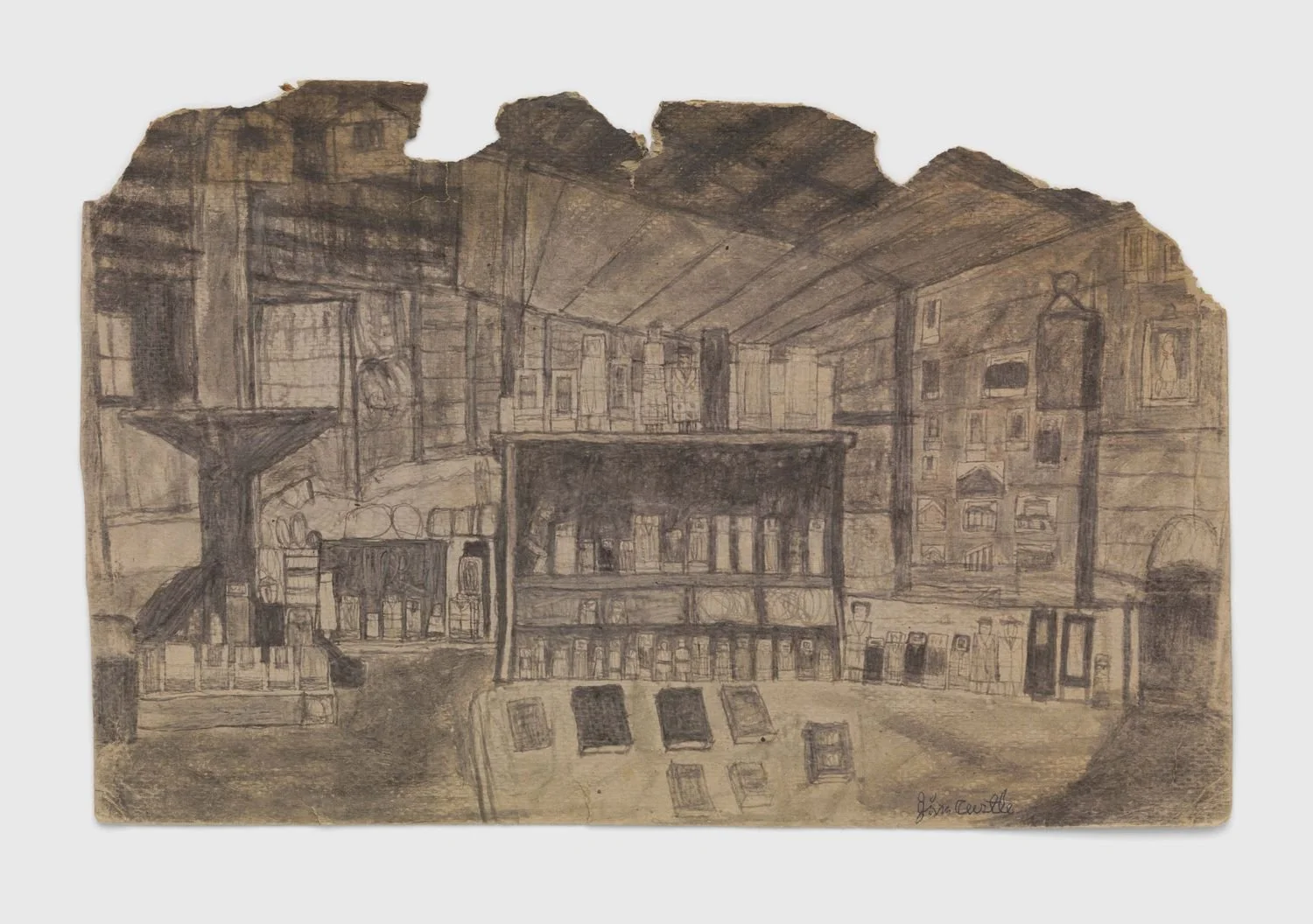James Castle
Works by James Castle (1899–1977)
New York, 537 West 20th Street
An overview of the artist’s expansive practice, this exhibition explores how Castle, who was born deaf, found his primary means of expression through drawing and other forms of art making. Using sharpened sticks and soot from his family’s wood stove, which he mixed with his own saliva, Castle created elaborate and detailed drawings. These intricate works embody a sense of lived-in familiarity and display the artist’s preternatural understanding of perspective and spatial relations and his deep sensitivity to his environment. As John Beardsley notes, “What Castle found in this … place became the subject of acute visual attention and near photographic memory: minute details of the spaces he inhabited provided him with an inventory of images that he would repeat, transform, and manipulate in his art for the whole of his life. He remembered—and drew—the contours of every room, every bed and bureau, the patterns of wallpaper, the exteriors of houses and barns and other outbuildings, adjacent roads, fences, and fields.… Castle was able to recall the exact ridgelines of a mountain visible from his childhood home and replicate it in drawing after drawing.”1
Castle incorporated color into many of his drawings—a number of which will be on view—using watercolor, crayon, laundry bluing, and myriad other materials to create washes of color that give the works a dreamlike, surreal quality. Contrasting with many of the soot drawings, the artist’s colorful works frequently emphasize flatness over spatial depth and detail, while highlighting his palette choices and the texture of his surfaces.
Several of Castle’s mixed-media constructions and other sculptural works will also be featured in the exhibition. Using twine at times to sew together disparate scraps of found and cut cardboard and paper, Castle fashioned figural forms and objects that include chairs, baby carriages, birds, and architectural elements. Castle stored his drawings, handmade books, and ephemera in small boxes and bundles that he carefully assembled and wrapped in paper or fabric and bound with twine. These small containers and art capsules were stored throughout his family’s property—in the walls, underneath floorboards, and along the rafters—reflecting both their importance to him and his desire to protect the artwork stored inside them.






